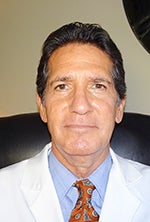Guest Column: It is painful to see turn of events with hospital
Published 6:56 pm Friday, October 20, 2017
Guest Column by Ronald Harmon
After hearing from family, friends and reading the local newspaper, I feel compelled to contribute to the conversation regarding ALMC.
I was appointed CEO of Albert Lea Medical Center-Mayo Clinic Health System in January 1998 and proudly served in that position for seven years. I clearly recall Mayo’s arrival in Albert Lea, as they first acquired the clinic and then Naeve Hospital to create Albert Lea Medical Center between 1994 and 1996.

Ronald Harmon
There was a lot of discussion and debate as to the merit’s of Mayo Clinic’s affiliation with Albert Lea’s clinic and hospital within the community and among hospital and Naeve Health Care Foundation board members. Mayo’s presence was not universally welcomed, and I recall well-respected board members and others adamantly opposed to Mayo taking over the hospital — not because they feared change, but because they were genuinely concerned about decisions made from a Rochester perspective and of benefit to Rochester, but not necessary for Albert Lea and surrounding communities. But health care delivery was changing. Rural hospitals were closing, and affiliations were common within Minnesota. As always, the future was an unknown, and “to maintain the quality of health care locally,” most supported the affiliation and the opportunity to receive Mayo Clinic services “close to home.”
Merging the cultures of our clinic, hospital and Mayo Clinic was challenging, but all rallied around Mayo’s mantra that “the needs of the patient come first.” There was general optimism that our care and services would achieve a higher standard when collaborating with Mayo Clinic.
I believe there was great enthusiasm to make things work, to get things done — all on behalf and in support of our patients and the community.
Mayo stressed this approach at every opportunity. The investment made in Albert Lea was not only financial, but would contribute to our economic growth and give Albert Lea the boost it needed to thrive. There was significant work to be done integrating the operations in Albert Lea with Mayo in Rochester, and the broader Mayo Health System. We constantly stressed Mayo’s patient-centric guiding principles and strategic goals.
Financial success, we were led to believe, was a byproduct of our efforts — a happy consequence — not our overarching goal. Dedicated and capable people made this happen, because they cared and they believed. Mayo fostered an image of stability and success built on high moral ground, and Albert Lea aspired to the same attributes. The Mayo Clinic people I worked with — the old guard — lived the principles they espoused. I firmly believe they wouldn’t have supported this decision.
There was never a time during my tenure that Albert Lea’s medical community was intended to be anything but robust and permanent. The future was defined by growth, improvement and high-quality care and service. Nothing else.
I now understand that the hospital in Albert Lea will basically dismantle inpatient care, and I’m not sure how that preserves the quality of health care locally. Has Mayo Clinic made a drastic change of course or abandoned its basic principles where the patient comes first? In what way were patients and families — and their health care — considered before this decision was made? And how, I wonder, does Mayo justify the generous donations received 15 years ago to “ensure the quality of health care locally?”
To believe that two communities of similar size, 25 miles apart, will be served equally by one hospital is nonsensical and short-sighted. Moreover, to believe that Albert Lea will continue to thrive by attracting families and recruiting business is preposterous.
If it’s strictly a financial decision, Mayo should own up to it. In my tenure, I never once felt pressured to reach specific financial targets. ALMC did well financially — records prove this. I have no doubt that had Mayo never come to Albert Lea, ALMC would be holding its own by listening to the community and adding needed services and care. So why not consider other options to preserve the hospital and inpatient care? The Albert Lea practice — any losses real or perceived — is inconsequential to the overall Mayo Clinic financial position. Small potatoes. So why not divest itself of the whole thing? Maybe cut it loose or turn it back?
Finally, Mayo Clinic is world-renowned for health care, education and research. Maybe community health care is just not in their wheelhouse. Why tarnish its reputation and jeopardize its brand by closing Albert Lea’s hospital and paying little heed to local patients and the community?
I cannot speak for the Albert Lea community or the many people who have donated and worked so hard to make Albert Lea Medical Center successful, but it’s painful to observe this turn of events that I consider nothing short of betrayal. “First, do no harm.”
Ronald Harmon is a former CEO of Albert Lea Medical Center.

